
Spilosoma lubricipeda, the white ermine, is a moth of the family Erebidae. It is found throughout the temperate belt of Eurasia from Europe through Kazakhstan and southern Siberia to Amur Region, China, Korea and Japan. In China several sibling species occur.

Spilosoma urticae, the water ermine, is a moth of the family Erebidae. It is found in temperate belt of the Palearctic realm like similar Spilosoma lubricipedum, but prefers drier biotopes. So, S. urticae is more abundant in steppes and it is the single Spilosoma species in Central Asia.
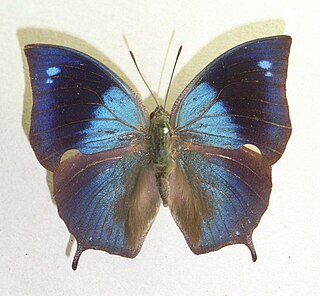
Memphis, described by Jacob Hübner in 1819, is a Neotropical nymphalid butterfly genus in the subfamily Charaxinae.

Tajuria is an Indomalayan genus of butterflies in the family Lycaenidae.

Spilosoma is a genus of moths in the family Erebidae originally described by John Curtis in 1825. A very heterogeneous group, it is in need of review by the scientific community, as certain species probably need reclassification into their own genera.

Virbia is a genus of tiger moths in the family Erebidae. The genus was erected by Francis Walker in 1854.
Melanchroiopsis is a genus of moths of the family Noctuidae. The genus was erected by Harrison Gray Dyar Jr. in 1918.
Tarache is a genus of moths of the family Noctuidae erected by Jacob Hübner. It includes most former New World Acontia species. Lepidoptera and Some Other Life Forms and The Global Lepidoptera Names Index report this name as a synonym of Acontia.
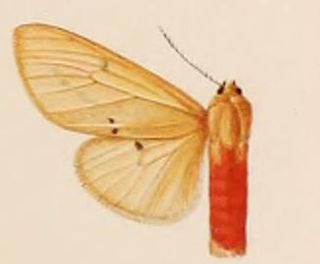
Spilosoma semperi is a moth of the family Erebidae. It was described by Walter Rothschild in 1910. It is found on Sumatra and Peninsular Malaysia.
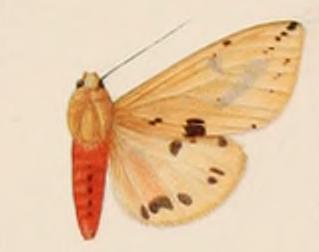
Spilosoma roseata is a moth of the family Erebidae. It was described by Walter Rothschild in 1910. It is found on Java in Indonesia.
Aethria melanobasis is a moth of the subfamily Arctiinae. It was described by Herbert Druce in 1897. It is found in Brazil.
Cosmosoma tarapotensis is a moth of the subfamily Arctiinae. It was described by Herbert Druce in 1897. It is found in Peru and Brazil.

Spilosoma curvilinea is a species of moth of the family Erebidae. It was described by Francis Walker in 1855. It is found in Cameroon, Republic of the Congo, Democratic Republic of the Congo, Ghana, Ivory Coast, Kenya, Nigeria, Senegal, Sierra Leone, Sudan, Tanzania, the Gambia and Uganda.
Pseudosphex pelopia is a moth of the subfamily Arctiinae. It was described by Herbert Druce in 1897. It is found in Panama and Bolivia.

Saurita mora is a moth in the subfamily Arctiinae. It was described by Herbert Druce in 1897. It is found in Panama.
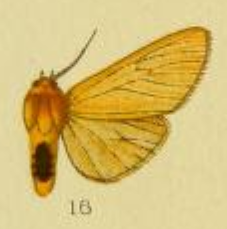
Spilosoma pales is a moth in the family Erebidae. It was described by Herbert Druce in 1910. It is found in Kenya, Tanzania and Uganda.
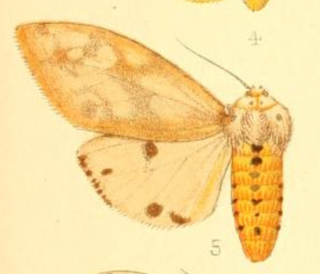
Spilosoma rava is a moth in the family Erebidae. It was described by Herbert Druce in 1898. It is found in Cameroon, the Democratic Republic of the Congo, Equatorial Guinea, Gabon, Ghana, Kenya, Liberia, Nigeria, Senegal, the Gambia and Uganda.
Spilarctia arctichroa is a moth in the family Erebidae. It was described by Herbert Druce in 1909. It is found in Papua and north-western Papua New Guinea. The habitat consists of lowland and mountainous areas.
Salobrena is a genus of moths of the family Pyralidae. The genus was erected by Francis Walker in 1863.










